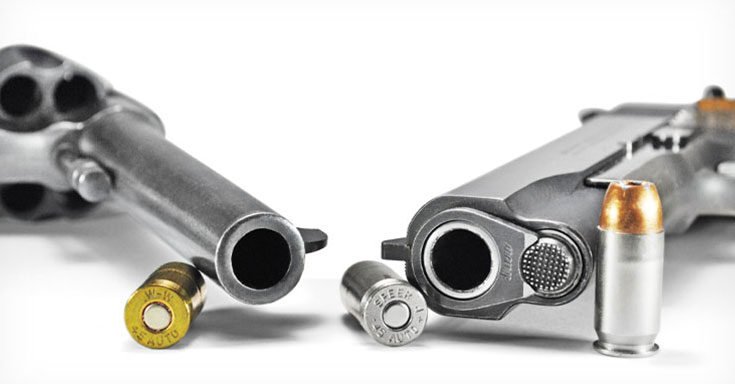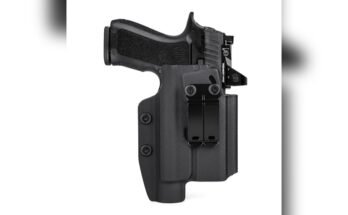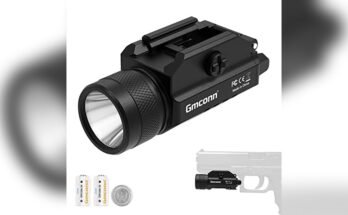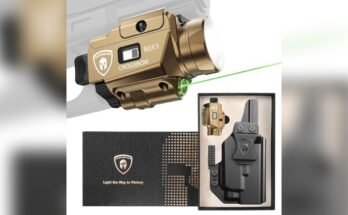If you’re new to everyday carry, safety starts with your holster. I’ve coached first-time carriers and range students for years, and the same truth always stands: the safest holster for beginners is a rigid, well-fitted holster that fully covers the trigger and stays put on the belt. In plain terms, a molded Kydex outside-the-waistband holster with solid belt loops and positive retention is the most forgiving choice for new shooters. In this guide, I’ll share what works, what doesn’t, and how to choose with confidence while keeping the question “What is the safest holster for beginners?” front and center.
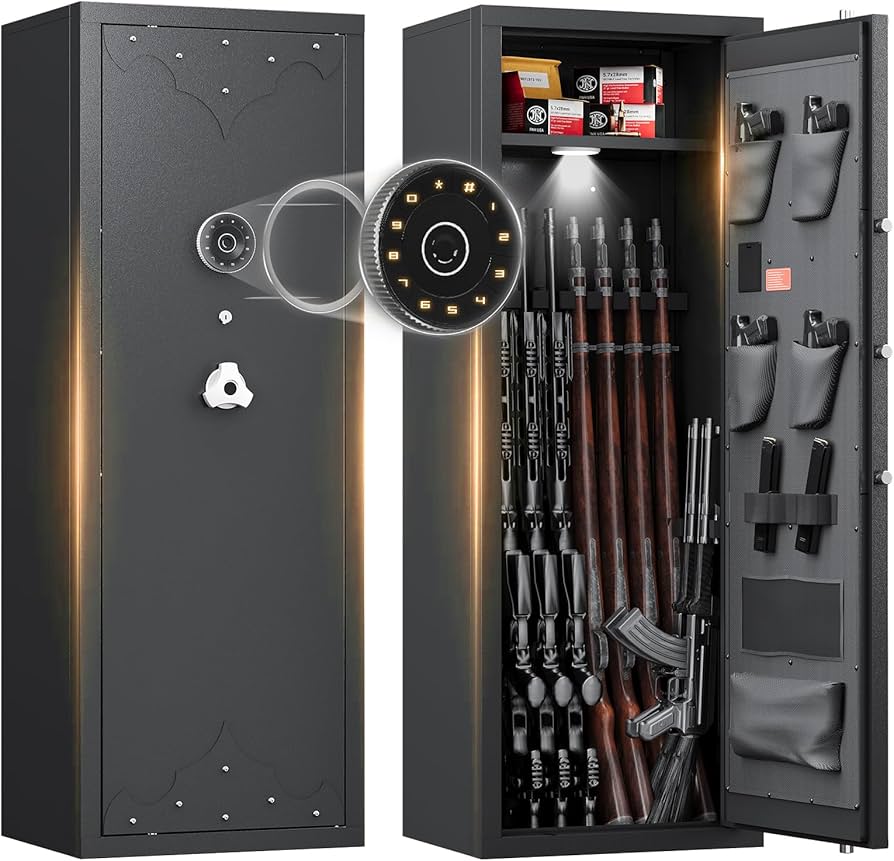
Source: www.amazon.com
What Makes A Holster Safe For Beginners
Safety is about control. A safe beginner holster keeps the gun secure, blocks any contact with the trigger, and allows a clean, straight draw.
Key safety features:
- Full trigger guard coverage. No gaps. Nothing should reach the trigger while holstered.
- Rigid shell. A stiff body stops collapse during reholstering. Rigid Kydex or well-boned leather are common.
- Positive retention. You should feel or hear a click on holstering and be able to test retention upside down over a soft surface.
- Stable belt attachment. Fixed loops are safer for new users than clips that can shift or lift.
- Consistent mouth opening. The holster stays open so you do not muzzle your hand while reholstering.
- Proper fit for your exact handgun model. Universal nylon sleeves invite mistakes.
In my classes, students who start with soft, generic holsters struggle with shifting, snagged draws, and inconsistent reholstering. Those risks fade fast when they move to a rigid, model-specific holster.

Source: www.ebay.com
The Safest Choice For Most New Carriers
For most beginners, the safest holster is a Kydex outside-the-waistband holster with:
- Full trigger coverage and a defined click on seating
- Sturdy, closed belt loops matched to a quality gun belt
- Neutral to slight forward cant for a straight, predictable draw
- A ride height that keeps the grip easy to access without digging into the body
Why OWB Kydex first? It is predictable. It stays open. It is easy to see what you are doing. It encourages clean fundamentals before you move to more concealed options like IWB or appendix carry. I’ve watched nervous first-timers relax after a few reps with a solid OWB rig because it reduces variables.
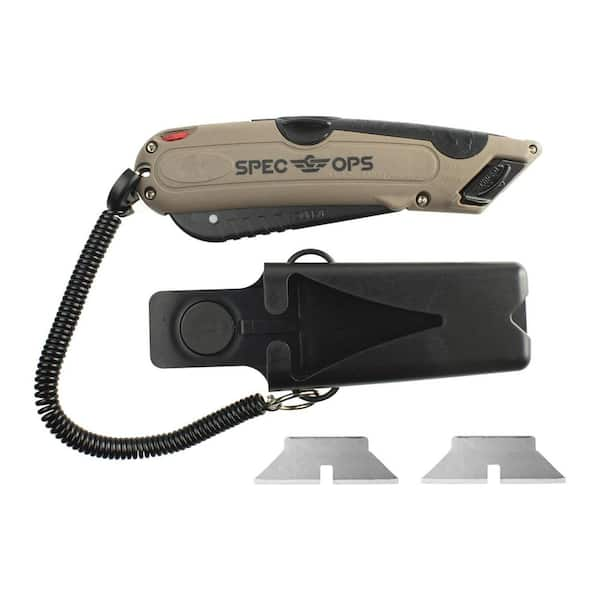
Source: www.homedepot.com
Materials And Build Quality Explained
Your holster’s material affects safety, comfort, and life span.
- Kydex. Rigid, durable, weather-proof, consistent retention, easy to clean. Great for beginners.
- Leather. Comfortable and classic. Needs break-in and can soften over time. Choose thick, well-boned leather if you go this route.
- Hybrid. Kydex shell with a soft backing. Comfortable but watch for backer collapse. Inspect often.
- Nylon or fabric sleeves. Not recommended for beginners. They can collapse, shift, and rarely protect the trigger well.
Build quality signs:
- Even molding around the trigger guard and slide
- Smooth edges that won’t cut or fray clothing
- Solid hardware with thread locker on screws
- Firm belt attachments that match your belt width

Source: www.amazon.com
Fit, Retention, And Draw Safety
Safe carry starts with fit. A model-specific holster hugs your slide and trigger guard so retention is crisp. That crispness guards against accidental dislodging during daily movement.
Checkpoints:
- The gun seats fully with no rocking
- You feel or hear the retention click
- You can draw straight up without binding
- Holster holds the gun when turned upside down over a bed or couch
Pro tip from the range: do not over-tighten retention screws. Overtightening can cause sticky draws. Aim for secure plus smooth.
Carry Positions And Beginner-Friendly Options
Position impacts both safety and comfort.
- Strong-side OWB at 3–4 o’clock. Most beginner-friendly. Clear draw path. Easy to learn.
- IWB at 3–4 o’clock. More concealment, slightly steeper learning curve. Choose rigid Kydex with a flared mouth.
- Appendix IWB (AIWB). Effective concealment but demands strict trigger discipline and well-tuned gear. Not my first pick for brand-new carriers.
- Shoulder holsters, pocket holsters, off-body carry. These require extra training and strict habits. Not ideal for most beginners.
If you plan to conceal soon, start with OWB to build a safe draw and reholster routine, then transition to IWB with similar features.
Common Mistakes Beginners Should Avoid
I’ve watched these same errors show up again and again. Avoid them and you’ll be ahead of the curve.
- Choosing a universal fabric holster to “save money.” Poor fit is costly later.
- Using flimsy belt clips. If the holster comes up with the gun, it’s a hazard.
- Covering the holster mouth with clothing while reholstering. Clear your cover garment fully.
- Fishing for the holster with the muzzle. Keep your support hand clear. Reholster slow and deliberate.
- Ignoring screws and hardware. Check and snug hardware on a schedule.
How To Test A Holster At Home, Safely
You can do a few simple checks at home to confirm safety. Keep it simple and careful.
- Verify the gun is unloaded, with no ammo in the room. Keep the muzzle in a safe direction.
- Seat the gun in the holster until it clicks. Tug test over a soft surface to confirm retention.
- Practice the draw stroke with a cleared gun. Smooth, straight up, support hand high on your chest.
- Reholster with care. Look the gun into the holster as you learn. Clothing should be lifted clear.
- Move, sit, and stand. The holster should not shift, pinch the trigger area, or tip outward.
If anything feels loose or inconsistent, adjust or choose a better holster. Confidence comes from repeatable results.
Budget, Value, And When To Upgrade
You do not need the most expensive holster to be safe. You need the right features.
Good value signs:
- Rigid shell with full trigger coverage
- Fixed loops or reinforced clips
- Adjustable retention with thread-locked screws
- Clean molding and smooth edges
Upgrade when:
- You change carry position or handgun
- You want better concealment after mastering OWB
- Hardware starts to loosen often or material shows wear
- You need features like concealment wings or wedges for IWB
Spending a bit more on a proven design often saves money versus replacing a bargain holster later.
Frequently Asked Questions Of What Is The Safest Holster For Beginners?
What Is The Single Safest Holster Type For A New Carrier?
A rigid, molded Kydex OWB holster with full trigger guard coverage and solid belt loops is the safest for most beginners. It is stable, predictable, and easy to learn with.
Is Appendix Carry Safe For Beginners?
It can be safe with strict habits and proper gear, but it demands more skill. Most new carriers learn safer and faster with strong-side OWB or IWB first.
Should I Avoid Soft Or Universal Holsters?
Yes. Soft or universal holsters can collapse and rarely fit well. Poor fit affects retention, access, and trigger protection.
How Important Is A Gun Belt?
Very important. A sturdy belt keeps your holster anchored, which protects your draw and reholster. Many “holster problems” are actually belt problems.
Do I Need Active Retention Like A Thumb Break?
Not usually for everyday civilian carry. Quality passive retention that clicks over the trigger guard is simple and safe for beginners. Add active retention if your environment demands it.
How Tight Should Retention Be?
Tight enough to hold the gun during daily movement but smooth enough for a clean draw. If you struggle to draw straight up, loosen slightly.
Can I Reholster Without Looking?
Beginners should reholster slow and deliberate, and it is okay to look the gun into the holster. Speed comes later; safety comes first.
Conclusion
If you want the safest start, pick a rigid, model-specific Kydex OWB holster with full trigger coverage, positive retention, and strong belt loops. Train with a sturdy belt, keep your draw path simple, and reholster with care. As your skill grows, you can move to IWB or appendix carry with the same safety standards in place.
Take the next step today: check your current gear against this guide, make one upgrade if needed, and schedule a short dry practice session to build confidence. If you found this helpful, subscribe for more practical carry tips or drop your questions in the comments below.
Watch This Video on What is the safest holster for beginners?
